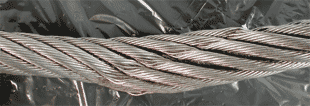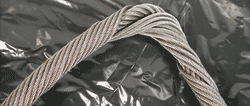Mechanical DamagesIt is nearly impossible to list all variations of mechanical damage a rope might be subjected to. Therefore, the following list should only be taken as a guideline. None of these damages are repairable. However, the magnitude of the damages may vary from a slight cosmetic damage to total destruction of the wire rope. If you are not sure about the extent of the damage, change the rope, or call us for technical assistance and advice. |
FittingsInspect the fittings on your rope and look for wire breaks at the shank of sockets or sleeves. Inspect the fittings for wear, distortion, cracks, and corrosion. Follow the inspection criteria of the fitting manufacturer and DO NOT ATTEMPT TO REPAIR ANY WIRE ROPE FITTING YOURSELF! Watch for missing hook latches and install new ones if necessary. If latches wear out too rapidly, ask us for special Heavy Duty latches which may fit your hook. Some hook manufacturers offer self-locking and special Gate Latch hooks. |
|||
 |
Bird Cage (6-strand rope) caused by shock loading. |  |
Inspect wire rope at all fittings. Replace fitting if any broken wires are detected.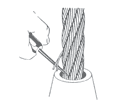 |
 |
 |
Bird Cage (non-rotating rope) caused by worn sheave grooves. | |||
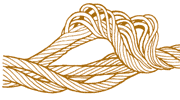 |
Bird Cage forced through a tight sheave. | |||
 |
Protruding Core because of shock loading, torque build-up during installation, tight sheaves, or incorrect rope design. | |||
|
Actual example of a wire rope which jumped out of the sheave. Note the imprint of the sheave flange. |
Actual example of a rotation resistant wire rope which was forced to run in too tight sheave grooves. Result is so called ‘core popping’. |
|||
 Wire rope rolled off a sheave. |
KinksKinked wire rope due to improper installation procedure. |
|||
Multiple drum winding: Layer-to-Layer Crushing. |
 Kinked wire ropes which have been used. Kinks are pulled tight and caused distortion and failure. |
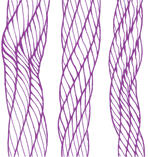 |
||
 Smooth drum winding: Srubbing between drum wraps. |
||||
 Smooth drum winding: Crushing at Crossover Points. |
||||




